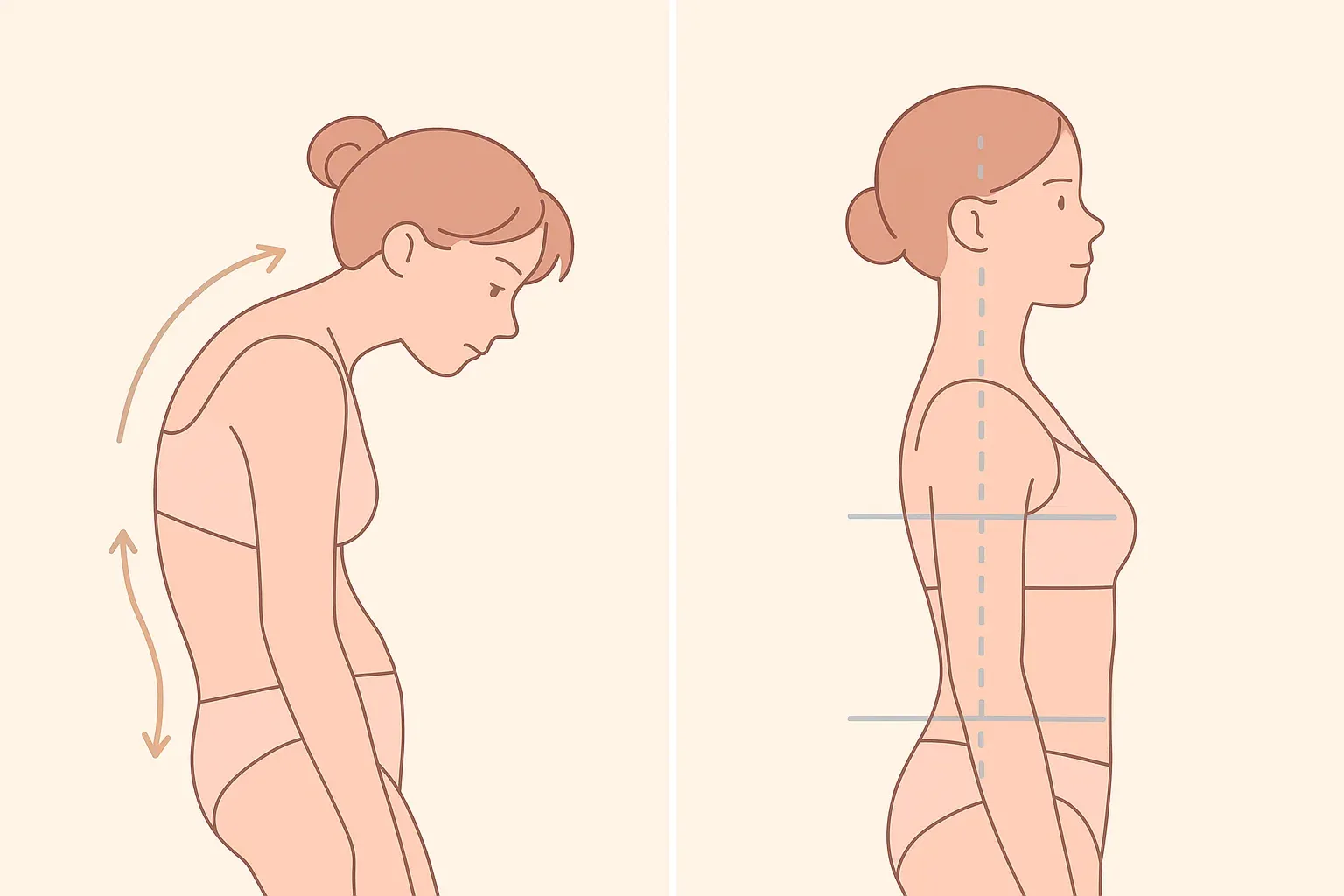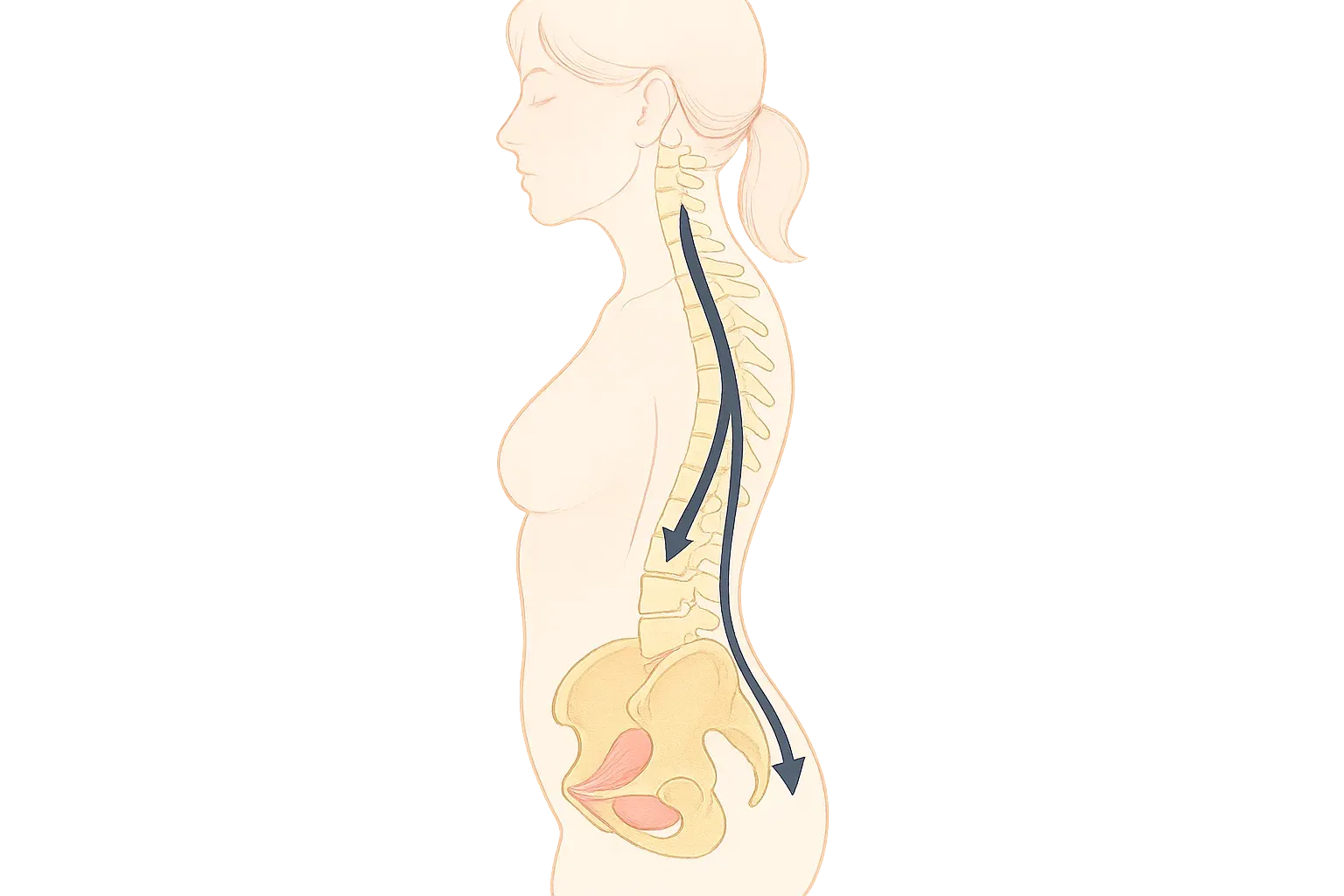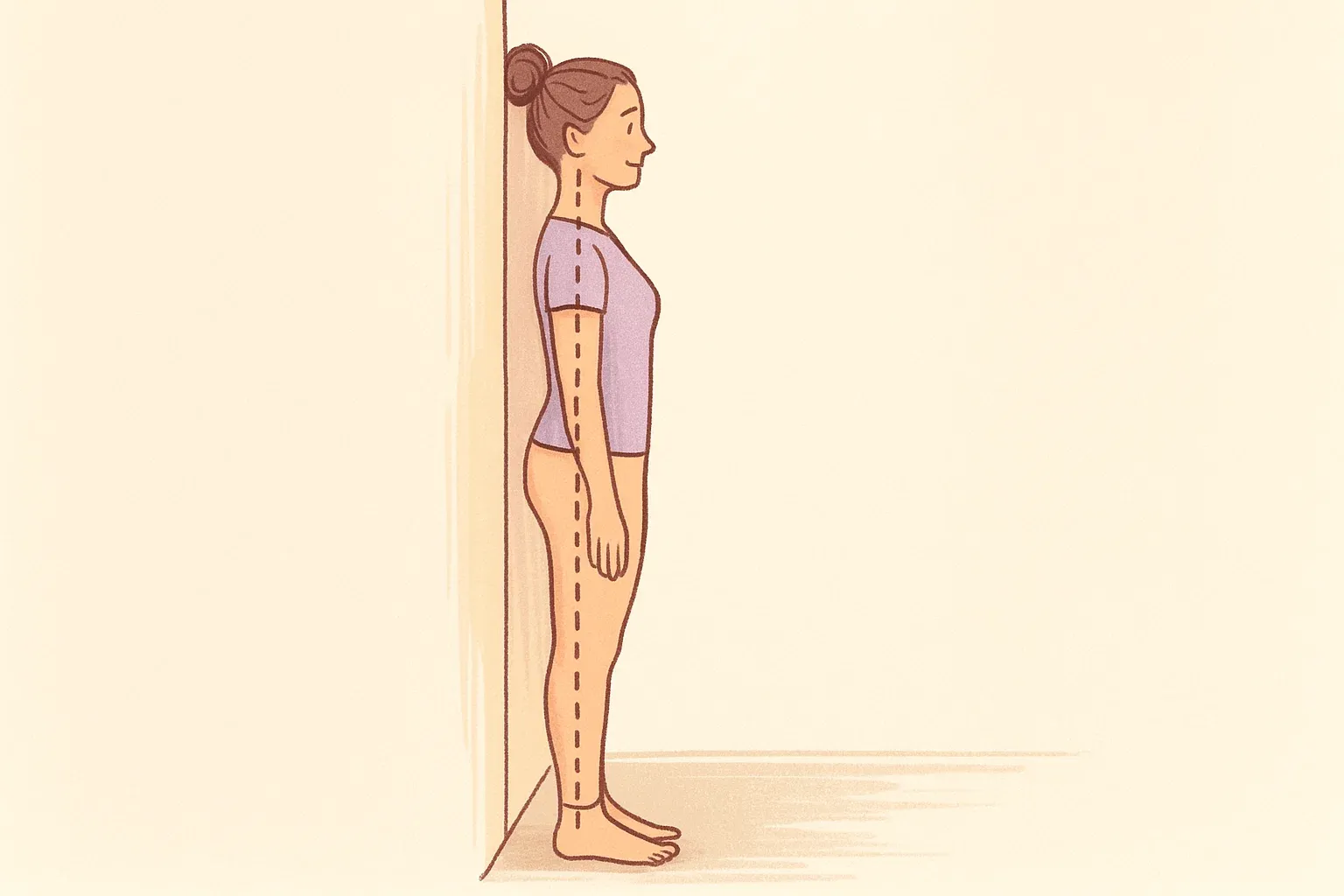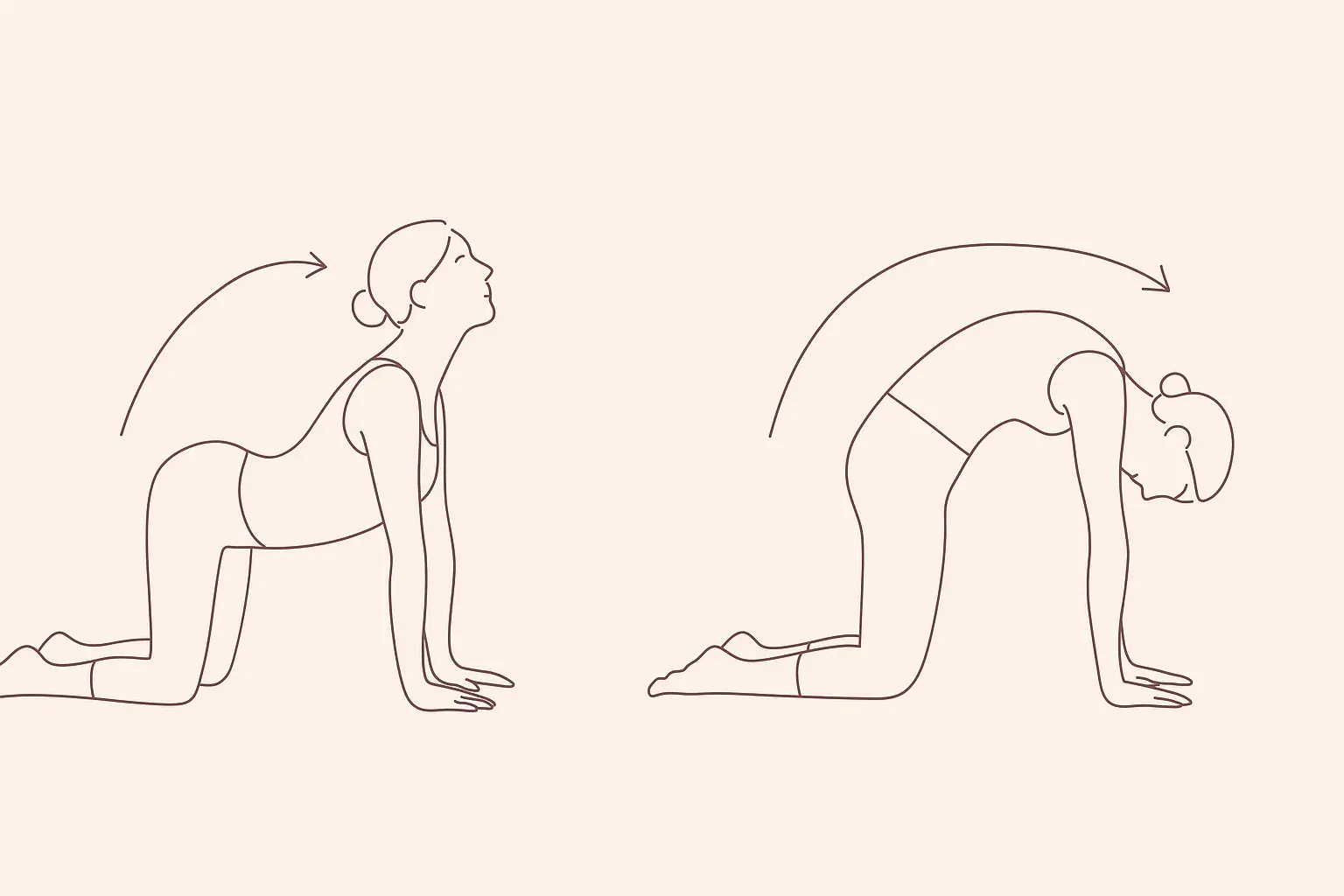- Top 5 Everyday Habits That Weaken Your Pelvic Floor — And How to Fix Them
- Pelvic Floor Pilates for Beginners: Strengthen Your Core From the Inside Out
- The Connection Between Posture and Pelvic Floor Health
- How to Reduce Bladder Leaks With 10 Minutes of Pilates a Day
- Pilates vs Kegels: Which Is Better for Pelvic Floor Health?
- Improve Intimacy and Confidence With These Simple Pelvic Floor Moves
The Connection Between Posture and Pelvic Floor Health
How standing tall can protect your core, back, and pelvic strength
When we think about posture, we often imagine standing straight to look confident or avoiding back pain. But did you know that your posture directly affects your pelvic floor health? Poor alignment can weaken your pelvic muscles, while good posture helps them function as nature intended. Let’s explore why posture matters so much and what you can do to improve it.

Why Posture Impacts the Pelvic Floor
The pelvic floor is a group of muscles that support your bladder, uterus, and bowel. They work in harmony with your core and diaphragm to keep everything balanced.
When your posture is slouched or your pelvis is tilted, these muscles get out of alignment. Over time, this can lead to:
- Weakened pelvic floor function
- Increased pressure on the bladder
- Discomfort in the lower back and hips
- Higher risk of leakage during daily activities
Simply put: your pelvic floor thrives when your spine and pelvis are aligned.

Common Postural Mistakes That Harm the Pelvic Floor
1. Slouching in a Chair
Spending hours hunched over a desk compresses your abdomen and puts pressure on your pelvic floor.
2. Overarching the Lower Back
Standing with your pelvis tilted forward (like sticking your belly out) overstretches the pelvic muscles.
3. Crossing Legs Too Often
This creates uneven hip pressure, which can throw off pelvic balance.
4. Tech Neck
Looking down at your phone shifts your whole spine forward, altering pelvic alignment.
Do any of these sound familiar? Don’t worry—there are easy fixes.

How to Improve Posture for Pelvic Floor Health
Here are everyday strategies to align your body and support your core from the inside out:
-
Check Your Sitting Position
- Sit with both feet flat on the floor.
- Keep hips and knees at a 90-degree angle.
- Imagine a string gently pulling you upward from your crown.
-
Neutral Pelvis Awareness
- Stand with shoulders relaxed.
- Tuck neither forward nor backward—find the middle point where your hips feel balanced.
-
Engage Your Core and Breath
- Practice diaphragmatic breathing: inhale to expand your belly, exhale to gently engage your pelvic floor and core.
- This keeps your muscles active without strain.
-
Take Standing Breaks
- Every 30–45 minutes, stand up, walk, and reset your posture.

Quick Posture-Friendly Exercises
These short exercises can be done anywhere and directly improve pelvic alignment:
- Wall Stand – Stand with your back against a wall, feet slightly away. Keep head, shoulders, and pelvis touching the wall for 1 minute.
- Seated Pelvic Tilts – On a chair, rock your pelvis forward and backward, then find the neutral middle position.
- Cat-Cow Stretch – On hands and knees, alternate arching and rounding your back to mobilize the spine.
Want a full routine tailored to your needs?
Take this Pelvic Health Quiz and discover a personalized program.

Everyday Benefits of Good Posture
By making posture a habit, you’ll notice improvements beyond your pelvic floor:
- Reduced lower back pain
- Better bladder control
- Improved breathing efficiency
- Stronger core stability
- More confidence in movement
Final Thoughts
Your pelvic floor is not an isolated system—it’s deeply connected to how you carry yourself every day. By paying attention to posture, you’re not just preventing discomfort; you’re empowering your whole body to work in harmony.
Stand tall, breathe deeply, and let your pelvic floor thank you.
Written by: Alex Morgan, Pilates & Mobility Coach